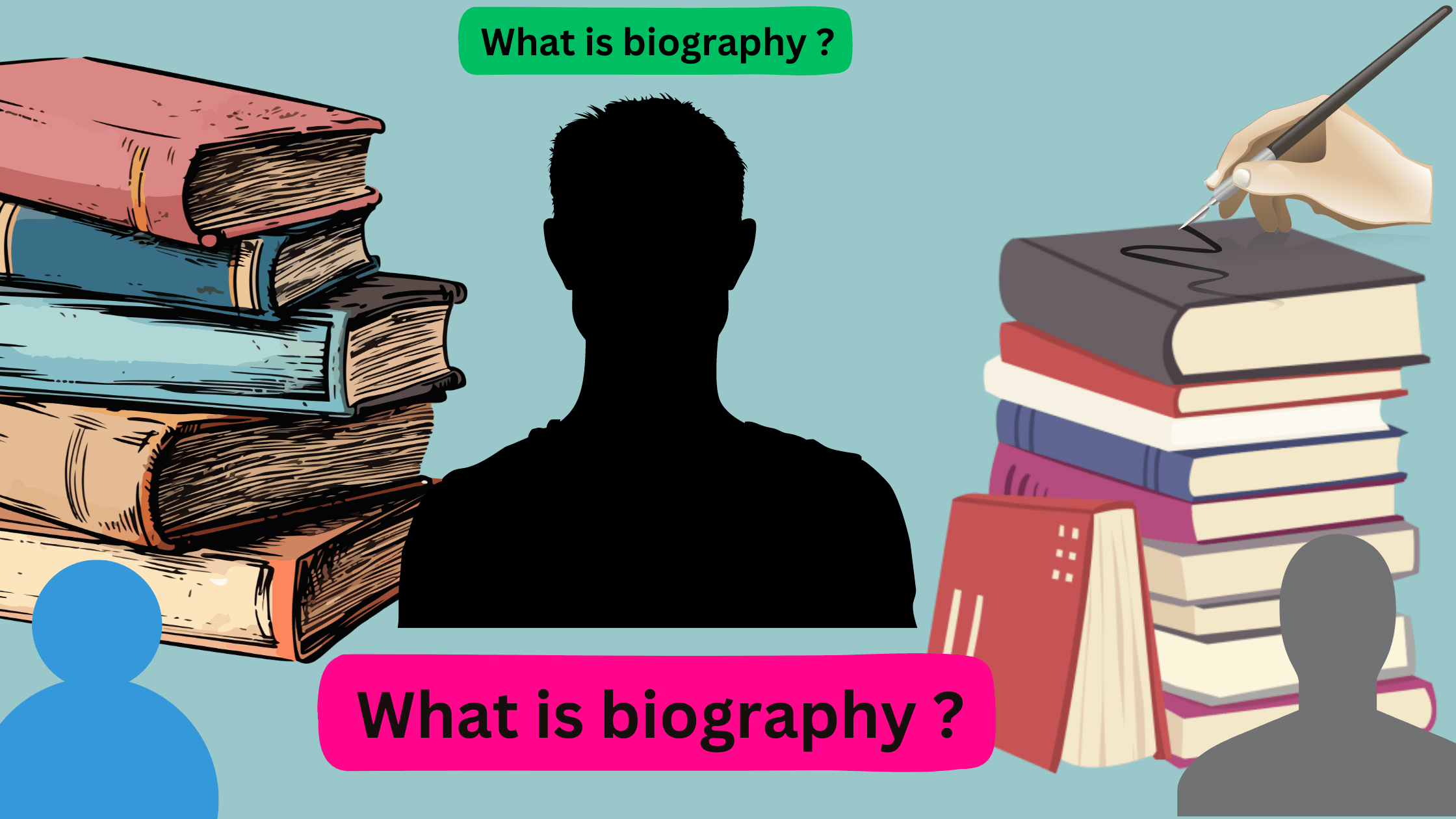Embarking on the journey of writing a biography is like unraveling the mysteries of a person’s life and immortalizing their legacy. But to transform a mere draft into a captivating and enlightening piece of literature, the biography writing process requires a unique blend of artistry, research, and storytelling. In this article, we will take you through the intricate path from draft to publish, unveiling the secrets behind crafting a compelling biography.
From gathering information through extensive interviews and research, to capturing the essence of a person’s character and experiences, the biography writing process is a meticulous endeavor that demands both precision and creativity. We will explore the strategies and techniques used by accomplished biographers to breathe life into their subjects, ensuring their stories resonate with readers.
Whether you’re a budding author seeking inspiration or a curious reader fascinated by the lives of extraordinary individuals, this article will give you valuable insights into the biography writing process. So, join us on this literary journey as we delve into the world of biographies and discover how words have the power to transcend time, shape history, and capture the essence of humanity.
Understanding the purpose of a biography
Biographies are not merely a collection of facts and dates; they are a powerful tool to immortalize the lives of remarkable individuals and inspire generations to come. The primary purpose of a biography is to offer readers a comprehensive and engaging account of a person’s life, capturing their triumphs, struggles, and the essence of their character. By delving into the intricacies of a subject’s personal and professional experiences, biographers have the unique opportunity to shed light on the human condition, illuminating the universal themes that resonate with readers.
Through the lens of a well-crafted biography, readers can gain a deeper understanding of the subject’s motivations, values, and the societal and historical contexts that shaped their journey. Biographies have the power to humanize historical figures, revealing their vulnerabilities and the complexities that often lie beneath the surface of public personas. By capturing the nuances of a person’s life, biographers can challenge preconceived notions, foster empathy, and inspire readers to reflect on their own lives and the world around them.
Moreover, biographies serve as invaluable historical records, preserving the legacies of individuals who have made significant contributions to various fields, from science and politics to art and literature. These accounts not only document the past but also provide a framework for understanding the present and shaping the future. By delving into the lives of trailblazers and visionaries, biographers can inspire readers to pursue their own dreams, overcome challenges, and leave an enduring mark on the world.
Steps in the biography writing process
Crafting a compelling biography is a multifaceted process that requires a combination of research, writing, and creative storytelling. The journey from draft to publication involves a series of carefully choreographed steps, each playing a crucial role in the final outcome. By understanding and executing these steps with precision, biographers can ensure that their subjects’ stories are told with authenticity, depth, and impact.
The first step in the biography writing process is to identify the subject and determine the scope of the project. Biographers must carefully consider the significance of their subject’s life, the unique perspectives they can offer, and the potential impact the biography could have on readers. This initial phase sets the foundation for the entire project, guiding the research, writing, and editorial decisions that follow.
Once the subject has been selected, the biographer embarks on a meticulous research phase, gathering a vast array of information from primary and secondary sources. This may involve conducting interviews with the subject (if still living), their family members, friends, and colleagues, as well as delving into historical documents, personal correspondence, and other relevant materials. The biographer must approach this research phase with an open mind, allowing the subject’s story to unfold organically and uncovering unexpected insights that can enrich the narrative.
Conducting research for a biography
The research phase of the biography writing process is a crucial and multifaceted endeavor that requires a deep commitment to uncovering the truth about the subject’s life. Biographers must be skilled in navigating a diverse range of sources, from personal archives and historical records to contemporary accounts and scholarly works, in order to piece together a comprehensive and nuanced understanding of their subject.
One of the primary tasks for the biographer during the research phase is to conduct in-depth interviews with the subject (if still living) and their close associates, such as family members, friends, and colleagues. These interviews provide invaluable first-hand insights into the subject’s personality, motivations, and the personal and professional experiences that shaped their life. By engaging in thoughtful and empathetic dialogue, biographers can uncover the unique perspectives and emotional complexities that are often absent from more formal historical accounts.
In addition to personal interviews, biographers must also delve into a wide range of documentary sources, including letters, diaries, memoirs, newspaper articles, and academic publications. These primary sources offer a wealth of information that can help the biographer paint a more nuanced and accurate portrait of the subject’s life, capturing the social, political, and cultural contexts that influenced their choices and achievements. By cross-referencing multiple sources and carefully scrutinizing the reliability and accuracy of the information, biographers can ensure that their narrative is grounded in historical truth.
Organizing the information and creating an outline
As the research phase progresses, biographers are often confronted with a vast and diverse array of information, from personal anecdotes to historical data. The challenge lies in organizing this wealth of material into a cohesive and compelling narrative that captures the essence of the subject’s life. This is where the process of creating an outline becomes a crucial step in the biography writing process.
The outlining stage allows biographers to systematically structure the information they have gathered, identifying the key events, themes, and character arcs that will form the backbone of the biography. By breaking down the subject’s life into a clear and logical sequence, biographers can ensure that the narrative flows seamlessly, guiding readers through the subject’s journey with a sense of purpose and coherence.
During the outlining process, biographers must carefully consider the various elements that will shape the structure of the biography, such as the chronological progression of events, the thematic focus, and the emotional arc of the subject’s experiences. This strategic planning helps biographers to strike a balance between historical accuracy and narrative cohesion, ensuring that the final product is not merely a dry recitation of facts, but a captivating and immersive exploration of the subject’s life.
Writing the first draft of the biography
With the research complete and the outline in place, biographers can now embark on the exhilarating and challenging task of crafting the first draft of the biography. This stage of the writing process requires a delicate balance of creativity, discipline, and attention to detail, as biographers strive to transform the wealth of information they have gathered into a compelling and cohesive narrative.
One of the key considerations for biographers during the drafting stage is to establish a distinct and authentic voice that resonates with the subject and the intended audience. This involves carefully selecting the language, tone, and narrative style that best serves the subject’s story, while also adhering to the biographer’s own unique literary sensibilities. By finding this balance, biographers can ensure that the biography not only accurately reflects the subject’s life but also engages and captivates the reader.
As the first draft takes shape, biographers must also grapple with the challenge of weaving together the various elements of the subject’s life – their personal experiences, professional achievements, relationships, and the broader historical and cultural contexts that shaped their journey. This requires a keen eye for detail, a deep understanding of the subject, and the ability to seamlessly integrate these disparate elements into a cohesive and engaging narrative.
Editing and revising the biography
The editing and revision process is a crucial and often time-consuming stage in the biography writing journey. Once the first draft has been completed, biographers must approach their work with a critical eye, scrutinizing every aspect of the narrative to ensure that it is polished, coherent, and true to the subject’s life and legacy.
During this phase, biographers must be willing to make difficult decisions, cutting or reworking sections that do not serve the overall narrative, and refining the language and structure to enhance the storytelling. This process of refinement may involve multiple rounds of revisions, as biographers strive to strike the perfect balance between historical accuracy, emotional resonance, and literary artistry.
One of the key tasks during the editing and revision stage is to ensure that the biography maintains a consistent and engaging voice throughout. Biographers must carefully examine their use of language, tone, and narrative techniques, making adjustments as necessary to create a cohesive and immersive reading experience. This may involve revisiting the subject’s own words and perspectives, as well as incorporating feedback from trusted readers or editors to further refine the narrative.
Incorporating feedback and making improvements
As the biography writing process progresses, it is crucial for biographers to seek out and incorporate feedback from a variety of sources, including editors, subject matter experts, and beta readers. This collaborative approach not only helps to strengthen the final product but also ensures that the biography remains true to the subject’s life and legacy.
During the feedback and revision stage, biographers must be open-minded and receptive to constructive criticism, recognizing that the input of others can often reveal blind spots or areas for improvement that they may have overlooked. By carefully considering and addressing the feedback they receive, biographers can enhance the depth, nuance, and overall impact of the biography, ensuring that it resonates with a wide range of readers.
In addition to incorporating feedback, biographers must also remain vigilant in their own critical analysis of the work, constantly evaluating and refining the narrative to ensure that it meets the highest standards of accuracy, clarity, and emotional resonance. This process of self-reflection and refinement may involve revisiting research materials, reexamining character portrayals, and making strategic decisions about the structure and pacing of the biography.
Finalizing the biography for publication
As the biography writing process reaches its culmination, the biographer must turn their attention to the final stages of preparing the work for publication. This involves not only polishing the narrative to perfection but also navigating the complex world of publishing, ensuring that the biography is presented in a way that captures the essence of the subject’s life and resonates with the intended audience.
One of the key tasks in this final phase is the meticulous fact-checking and proofreading of the manuscript, ensuring that every detail – from dates and names to quotations and historical references – is accurate and consistent. Biographers must work closely with editors, fact-checkers, and other publishing professionals to meticulously review the text, leaving no stone unturned in their quest for perfection.
In addition to the editorial process, biographers must also consider the visual elements of the biography, such as the cover design, layout, and any accompanying illustrations or photographs. These elements play a crucial role in shaping the reader’s experience, helping to set the tone and convey the essence of the subject’s life. By collaborating with designers and other creative professionals, biographers can ensure that the final product is a harmonious blend of textual and visual storytelling.
Celebrating the completion of a biography
The completion of a biography is a momentous achievement, marking the culmination of countless hours of research, writing, and revision. For the biographer, this milestone represents not only the successful execution of a complex and demanding literary endeavor but also the opportunity to immortalize the life and legacy of an extraordinary individual.
As the biography is finally released into the world, biographers can take immense pride in the knowledge that their work will serve as a lasting testament to their subject’s impact and influence. Whether the biography resonates with a wide audience or speaks to a more specialized readership, the biographer can take solace in the fact that they have played a vital role in preserving and sharing a compelling and insightful account of a life well-lived.
Beyond the personal satisfaction of completing a biography, the publication of such a work also holds the potential to inspire and enlighten readers, challenging preconceptions, fostering empathy, and igniting a deeper appreciation for the human experience. By delving into the complexities of a subject’s life, biographers have the power to shed light on universal themes that transcend time and place, connecting readers to the shared experiences and aspirations that unite us all.


